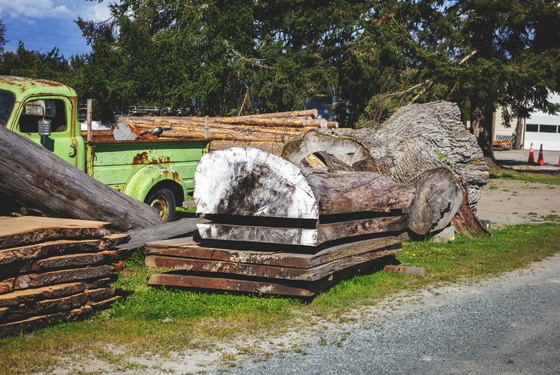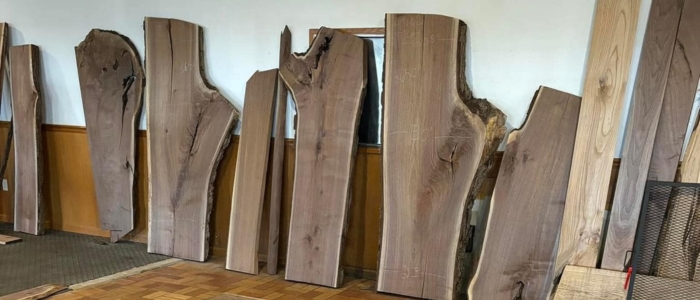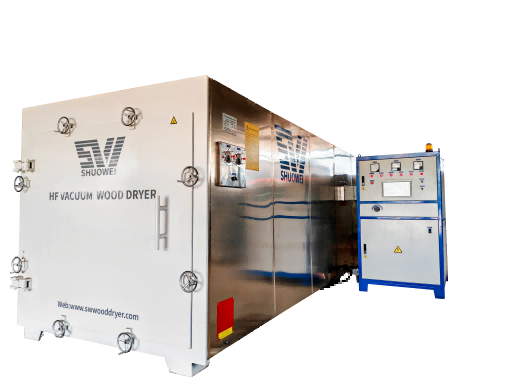In the world, regardless of whether the wood is used to construct cabinets for kitchens or frame the frame of a house, it needs to be dried prior to being able to be utilized. Let’s look at some reasons.
The Water Content of a Tree
Trees are awash with water. Each aspect of a tree from the leaves all the way to the root system is home to an amount of water in it. Water is a vital part of the photosynthetic process and is utilized for transporting sugar nutrients hormones, minerals, and other substances throughout the tree.
This is the form of sap. The amounts of water that is contained in wood pieces are known as the moisture content. In wood, it is calculated by the weight of the water that is present within the wooden structure divided by its dry weight. The content of moisture is expressed in percent.

For instance, if we have the wood piece that weighs 6 pounds, including the water, and weighs 3 and five pounds without water, then we have two and two and a half pounds of water contained in the wood piece.
Changes in water content
If you divide that weight by dry wood, we will get an average moisture content of 71.4 percent. It is true that the moisture content in freshly cut wood can range between 30 percent and 100 percent.
How is it possible for the wood piece to have a moisture content that is greater than 100 percent? If you have a content of moisture above 100 percent, it is simply indicating that the weight of water contained in the wood weighs greater than the weight of dry wood.
The moisture content of wood differs between species. It also differs among trees belonging to identical species. It is even different in boards that are cut by the same species. Wood can lose or gain moisture until it’s in equilibrium with the surroundings in which it is placed.
The Equilibrium Content Moisture of a Wood
The wood will no longer lose or increase water equilibrium in its environment. The concept is known as the equilibrium content of moisture.

This equilibrium content of moisture is determined based on the temperature as well as the humidity of the air.
For example, if the temperature is at 70°C and the relative humidity is 68 percent, it will be 12 and a half percent. That means that the wood if allowed to mature, will eventually reach an average water content equal to 12 and a half percent.
If the content of moisture in the wood is higher than 12 and one-half percent, It will start losing moisture. If the moisture content of the wood is less than 12 and a quarter percent then it’s going to lose water.The loss or gain of moisture will continue until the wood has reached 12 and a half percent of moisture content.
The Stability of Dimensionality
In the event that the temperature is constant and relative humidity is not changed before it is there. What’s the point of it being important if wood loses or gains moisture?
The answer lies in the stability of dimensionality, which is among the primary reasons why wood needs to be dried. Wood starts to shrink in size, and thickness when the moisture content begins to fall lower than 30 percent.
Different Tree Species
Its amount will vary according to the species. However, it can vary between five and 10 percent in the width, and up to three percent thick based on the species and the way the wood was cut off the log.
When a piece of wood is manufactured prior to shrinkage taking place, joint damage can occur and the product could fail. If the shrinkage isn’t excessive, the product could be prone to warping, even though joints aren’t likely to break.
After drying, the shrinkage has already taken place. If the wood is maintained in conditions that maintain the closed equilibrium level of moisture in relation to the moisture content the lumber has been dried, there shouldn’t be any issues caused by shrinkage.
Wood designed to be used in a home is typically dried to a moisture content of approximately 7 percent, as this is the norm of the environment inside the house. The wood used to make construction lumber is generally dried to about 15 percent moisture content. The image below is a table that was well-dried red oak with 7 percent.

Kiln Dried
The wood was well dried in a kiln that was heated until it reach its equilibrium around several weeks prior to the time that the table was constructed.
When we have a close inspection of the table, it is clear that there’s no warping on the surface of the wood table. If a straight edge is placed on the tabletop, there is no noticeable amount of warp will be observed.
We can also observe how the tabletops didn’t warp. Even when it is cold and there is a low EMC low in the house the table is not gaining size. And When the EMC is inside the house rise, the warped wood didn’t warp or shrink its size.
The reason for this is that it was found that the humidity content of the wood reached the exact level fit for the construction of the table.
Example of Excessive Moisture Content
The wood started to expand once it was placed inside the house. It is an American red oak floor tile, the wood they used for it had excessive moisture content at the time the wood tile was made. After the tile was made and it started to expand, and cause it to split the tile. Remember that wood also gains moisture.

It will start to shrink once it starts to expand. The wood used to make the tables was dried to a moisture content of 7%, and when exposed to the elements in an uncontrolled environment, it will continue to absorb moisture until it reaches an equilibrium moisture content in the surrounding air.
In Pennsylvania there is an equilibrium level of humidity of the air outside that can vary between 11 and 14 percent, based on season and the conditions. Thus, wood that has been properly dried could result in an excessive amount of moisture to be suitable for use in the interior of a house.
Stop the Fungal Attacks

The image above is an example of a fungal attack on wood. This is another reason that lumber is need to be dried is to stop fungal attacks that can cause discoloration of the wood, and even cause it to turn rotten. The fungus must have moisture to thrive. Thus, eliminating moisture will kill any fungus which might already exist, and can prevent further attacks from fungus so long as the wood is kept dry.
Drying the wood properly removes any eggs or insects which may be present within the wood. The majority of insects require a moisture content of over 10% to thrive in wood. However, there are exceptions to this rule. some termites, as well as certain powder beetles.
So long as it is heated up to rise above 135° during drying, any insects present within the wood as well as the eggs that could be there are killed. The drying process of air-drying wood won’t kill the insects or eggs within the wood due to the temperatures aren’t sufficient.
The importance of temperature
Of course, we are generally told that high temperatures are required to kill insect eggs in wood, but too high temperatures may also damage the wood.
So SHUOWEI has developed a high frequency vacuum wood drying kiln that uses low temperature drying, which not only kills the insect eggs in the wood but also ensures that the wood is not cracked and deformed.
The problems with finishes and paints may also be caused by the moisture content that is excessive. The moisture content of less than 14% will limit the problems caused by paints and finishes, however, if the contents are too high it is possible that peeling and blistering be observed.
There are a variety of other reasons that lumber should be dried. For instance, the lumber that will undergo a treatment to prevent decay is required to be dried.
Shipping is more affordable
Drying can also decrease the weight of the lumber and allows it to be loaded into trucks, and shipped at an affordable cost per board foot. Drying can also increase the strength properties of wood. Whatever the reason for drying the wood, it’s not expensive and the lumber industry is spending lots of time, and money drying their lumber to the proper moisture content, and to the highest quality. We’ve explained the reasons.

Conclusion
Drying woods or lumber before using it in anything is a practice that you don’t want to miss.
Well-dried wood is more durable and usable, so if you planning on making something from the wood, you can check first if it is properly dried by checking its moisture content in this way, you can achieve a great result on what you are making. And can make a good profit from it or can make a good product from it.
If you are looking for a good drying machine you can check out our product or contact us to discuss what is best for your business.




